African-American Heritage Trail
African Americans have lived, worked, and worshipped in Georgetown since its founding—making up 30% to 40% of the residential population at one time.
Discriminatory public housing policies such as The Alley Dwelling Elimination Act and The Old Georgetown Act, as well as gentrification—before the latter had a name—largely pushed out much of the community from the 1930s to 1950s, but their history remains.
Follow Cultural Tourism DC’s African American Heritage Trail (below) to see the institutions and homes of Herring Hill, a 15-block area of eastern-most Georgetown that was a home for families migrating to Washington after the Civil War. Other points of interest include the site of formerly enslaved Georgetown resident Yarrow Mamout’s home, the Mount Zion / Female Union Band Society Cemetery, and the Rose Park tennis courts—dedicated to the star Peters sisters.
*Some points of interest copy from Cultural Tourism DC
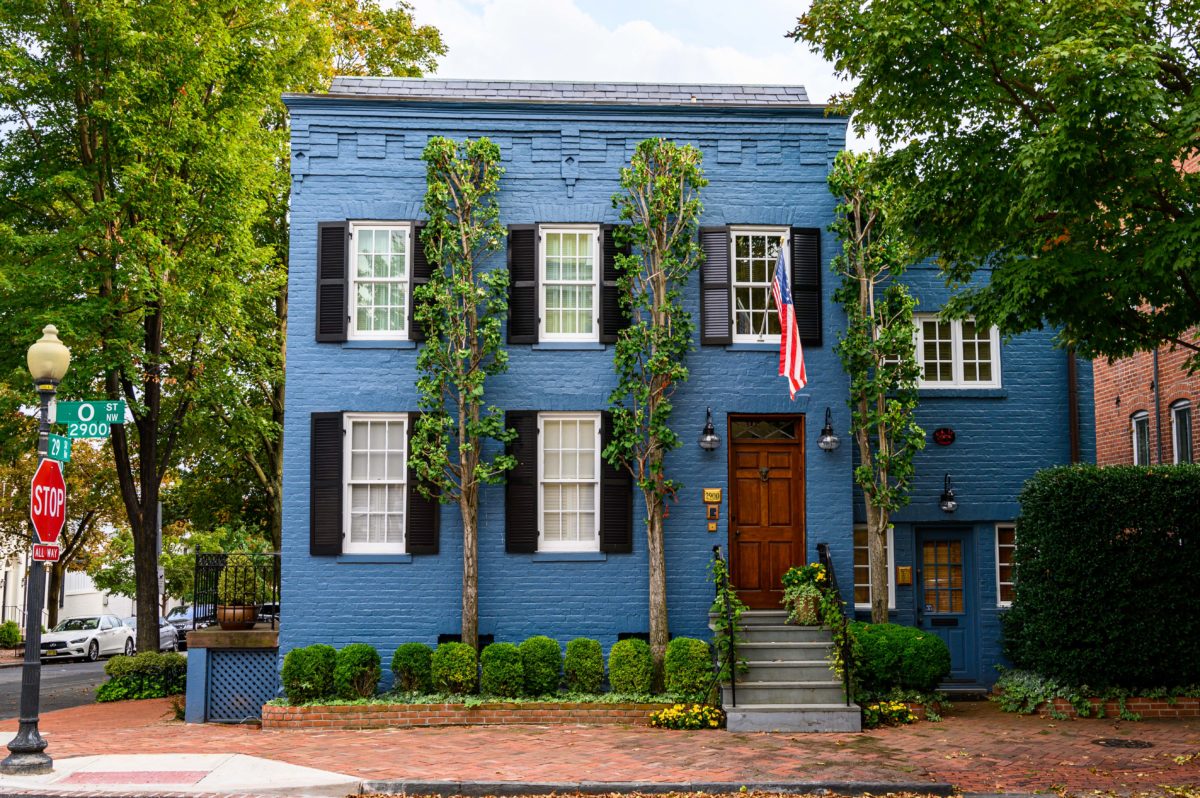
Alfred Pope and Hannah Cole Pope Residence, 2900 O St
Alfred Pope (1821-1906) and Hannah Cole Pope (1828-1910) were a prominent Georgetown couple, active in public affairs and real estate.
Hannah was born in the home of Thomas Peter and Martha Custis Peter (now Tudor Place), where she and her mother were enslaved. In 1845 Hannah was sold to South Carolina Congressman John Carter, in whose household she met Alfred Pope. The two married in 1847. In 1848 Alfred Pope joined the unsuccessful attempt by 77 enslaved men and women to escape Washington on the schooner Pearl. He was returned to servitude in Carter’s household. Both Alfred and Hannah were freed upon Carter’s death in 1850. They remained in Georgetown, where Alfred parlayed savings from a job as the town scavenger into businesses in real estate and building materials. Alfred testified before Congress in 1870 during the debate over merging Georgetown with Washington City. He also served as a trustee of the public DC Colored Schools. In 1875, as a trustee of Mount Zion United Methodist Church, he sold to the church the land on which its church building was constructed at 1334 29th Street, NW.
Eventually Alfred owned five single-family houses and five tenements in Georgetown north of Reservoir Road.
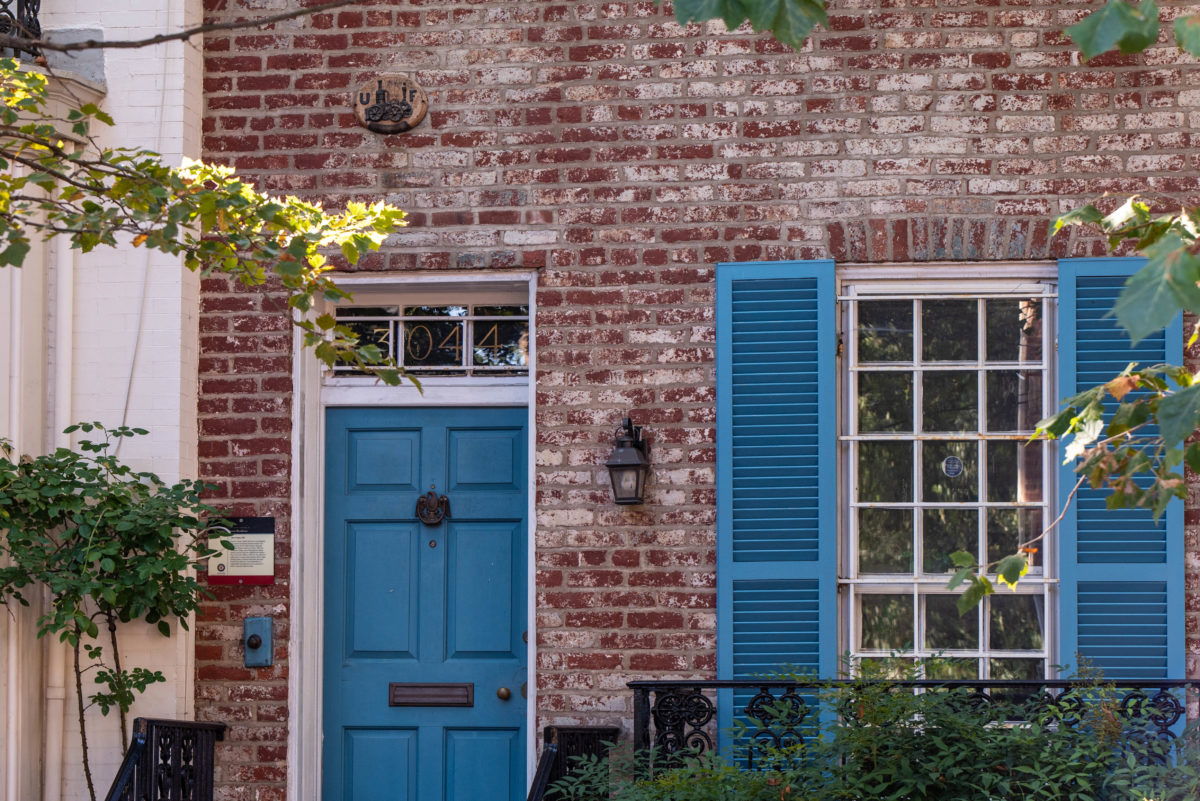
Emma V. Brown Residence, 3044 P St
Emma V. Brown (1840-1902), a native Washingtonian, was the first African American teacher to be employed by the DC Public Schools.
Educated at Myrtilla Miner’s school on N Street, NW, and at Oberlin College, she opened a private school for neighborhood children here in her home. During the summers she traveled to rural communities across the South, where she trained teachers.
When the DC Government authorized public funds to educate black children in 1864, Brown began teaching her first public school class at the Ebenezer Methodist Episcopal Church (now Ebenezer United Methodist Church) on Capitol Hill. She would later serve as principal of the John F. Cook School and then Sumner School. Brown was also an accomplished poet.
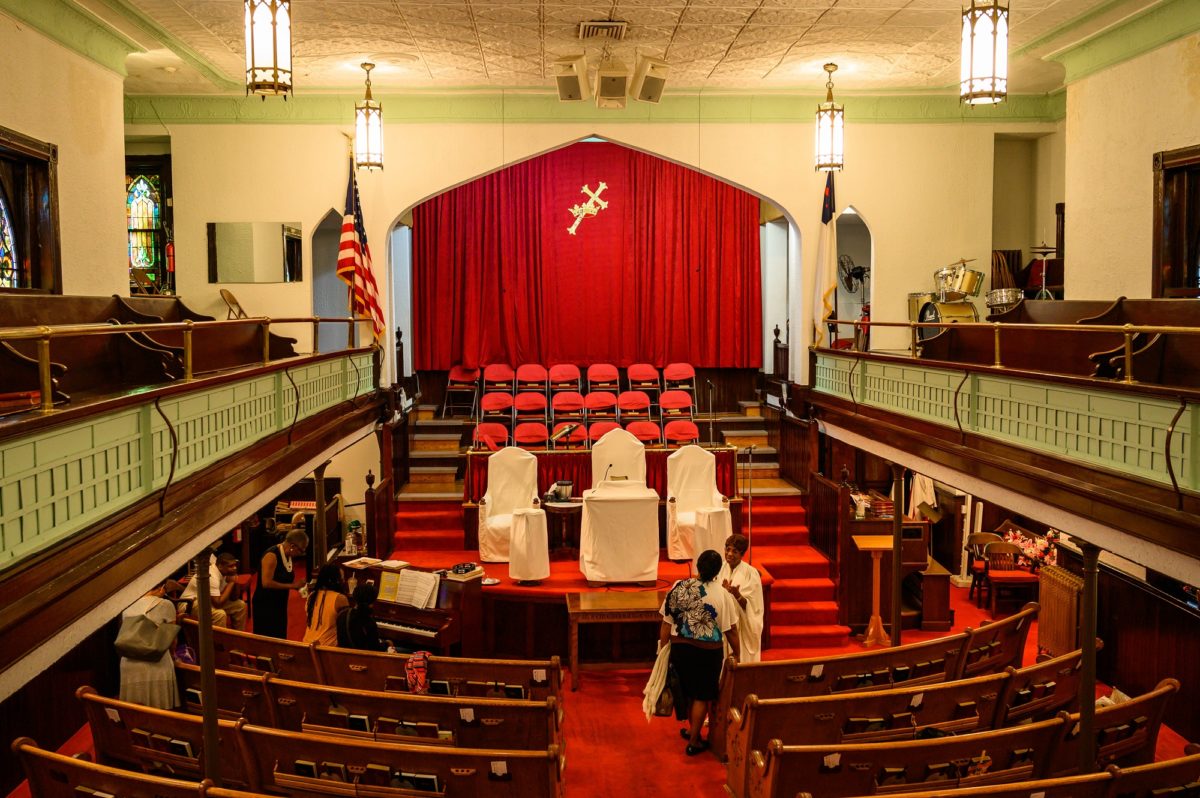
First Baptist Church, 2624 Dumbarton St
The First Baptist Church, Georgetown was the first Baptist church established in Georgetown. It was founded in 1862 by the Reverend Sandy Alexander (1818-1902), a former slave who moved to Georgetown in 1852 with the express goal of organizing a Baptist church. Although not many Baptists lived in the community, the church soon drew converts, as well as many former members of the Shiloh Church of Fredericksburg (Virginia) who migrated to Washington.
At first the congregation met in a small frame structure they called the Ark on land at 29th and O streets donated by Collins Williams. Williams was a licensed preacher originally from Fredericksburg, who with his wife Betsey had led religious meetings in private homes around Georgetown before Alexander founded First Baptist. In 1882 First Baptist’s growing congregation laid the cornerstone for the current building, financing it in part with the proceeds of a speaking tour undertaken by Rev. Alexander through the northern states.
First Baptist seeded a black Baptist tradition in Georgetown, as former members of the congregation started the nearby Alexander Memorial Baptist Church and the Jerusalem Baptist Church. Rev. Alexander retired as First Baptist’s pastor in 1889.
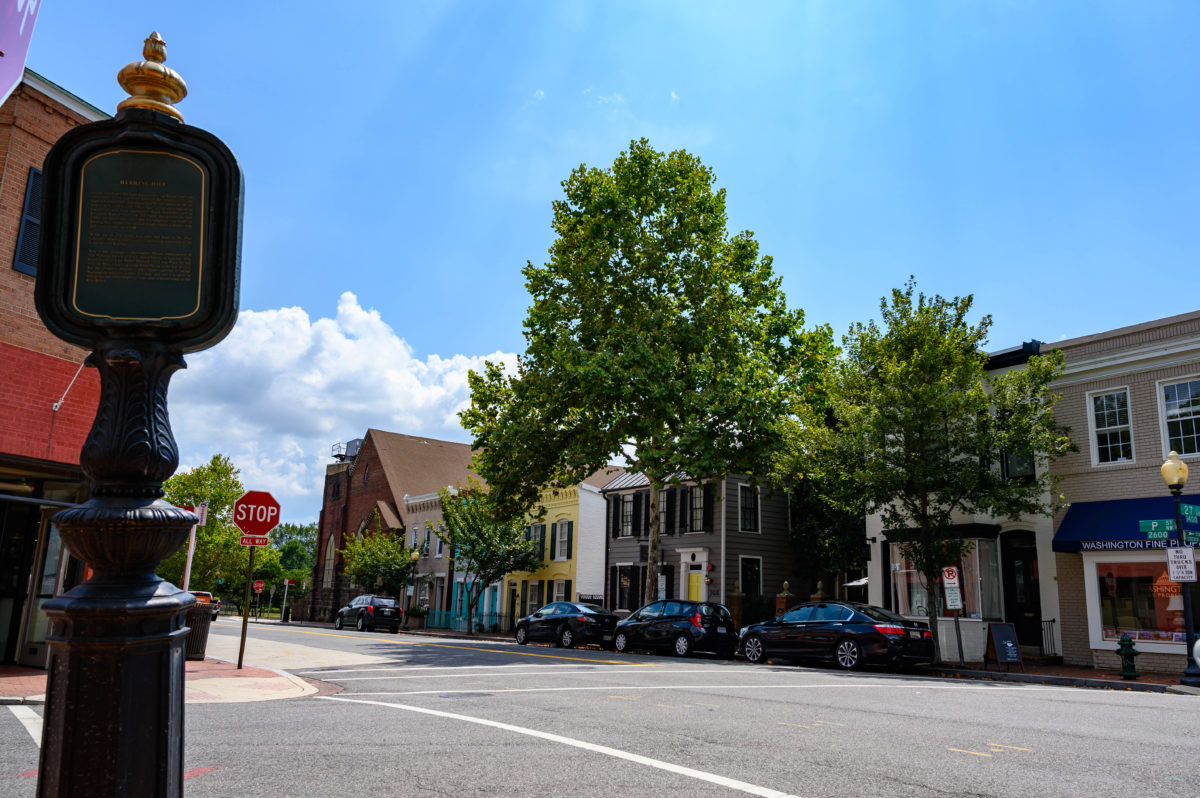
Herring Hill, 29th St to Rock Creek
Herring Hill was the nucleus of the black community in Georgetown, although African American families could be found on nearly every street well into the 1930s.
Tradition has it that the name came from the fish that neighborhood families caught in nearby Rock Creek. According to historian Mary Mitchell, by 1860 Herring Hill was a self-sustaining, even village-like community with a population of 951. Interspersed among the residences by the 1920s were candy stores, “mom and pop groceries,” coal and ice sellers, barbershops and beauty shops, cleaners, movers, feed stores, and everything else necessary to life. Most were black-owned businesses. Laborers lived alongside physicians, lawyers, and other professionals.
Herring Hill’s simple frame dwellings survived the gentrification of the 1930s to become prized, well-located townhouses in the 1960s and beyond.
The hills spans a 15-block area south of P Street between Rock Creek and 29th Street.

Holy Rood Cemetery, 2126 Wisconsin Ave
The remains of as many as 1,000 free and enslaved African Americans are buried in the Holy Rood Cemetery, now owned by Georgetown University. The cemetery was established in 1832, when members of Holy Trinity Church ran out of room in the graveyard near the Georgetown church, and additional land was purchased here in 1853. Both whites and African Americans are buried there. Most of the burials took place from the mid-19th century through the early 20th century. Holy Trinity Church, and therefore the cemetery, drew from all over Georgetown and other nearby areas. Many prominent African American families are listed among those interred.
The cemetery is no longer in operation. Its official records are available to researchers at Georgetown University’s Lauinger Library.
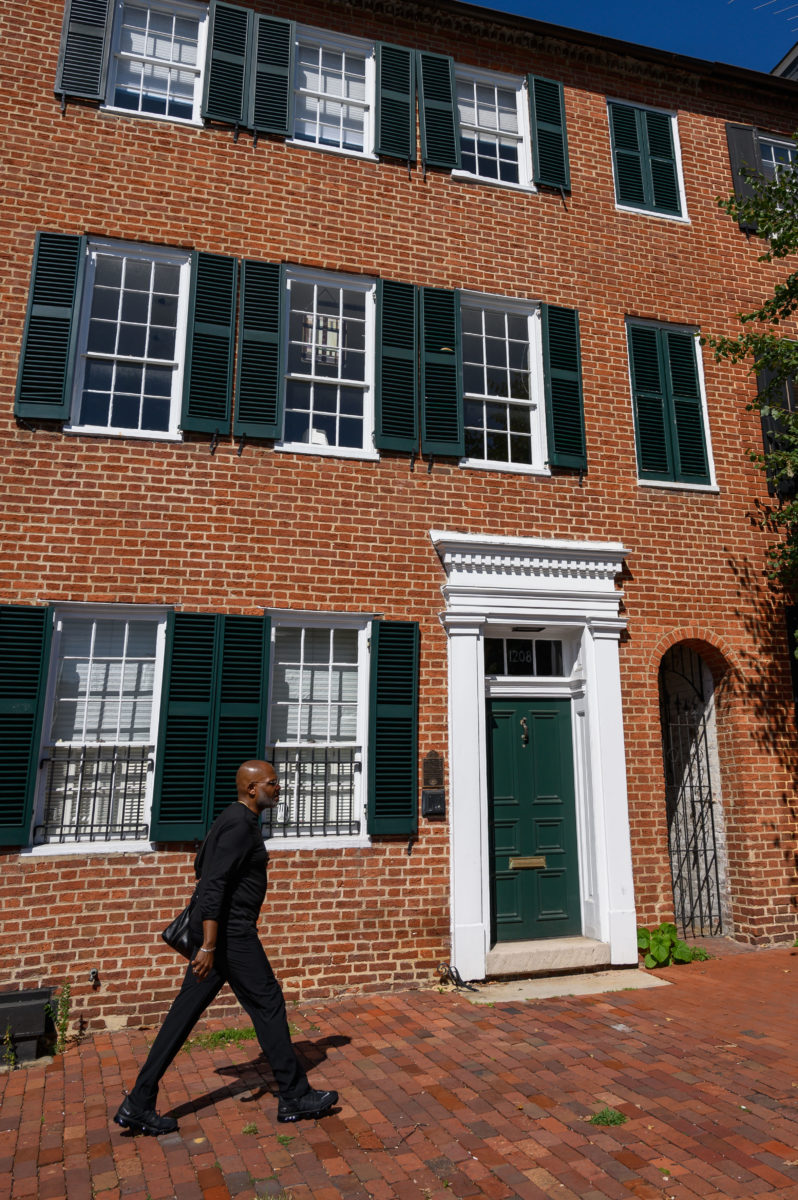
James H. Fleet Sr. Residence, 1208 30th St
James H. Fleet Sr. was an educator, violinist, and abolitionist who was born around the year 1815. He attended Georgetown’s Lancasterian School (an interracial school), the Smothers School, and John Prout’s School. Fleet was educated in medicine through the American Colonization Society but was denied a medical license to practice after refusing to go to Liberia. He became a teacher and established his first school in 1836. In 1843, the same year he bought this house, the school was burned by white arsonists. Fleet reopened it three years later. He also participated in the local abolitionist movement, organizing “sitting parties” to raise money for individuals seeking freedom. He devoted the last ten years of his life to playing and teaching music, a passion he shared with his wife Hermione. Fleet died in 1861.
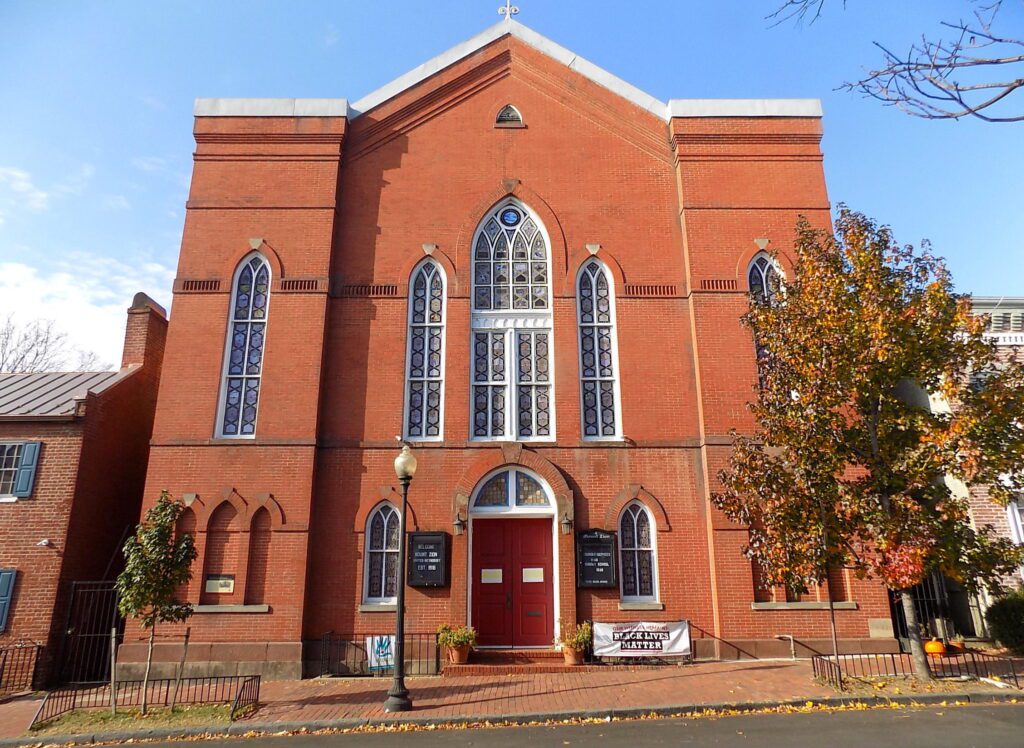
Mt. Zion United Methodist Church, 1334 29th St NW
Mt. Zion United Methodist Church is the oldest African American congregation in the District of Columbia. It was founded on October 16, 1816, when 125 black parishioners, both free and enslaved, left the Montgomery Street Church (now Dumbarton United Methodist Church) founded in 1772 due to prejudice and discrimination.
The black Methodists purchased land on Mill Street (now 27th Street) in Georgetown and built a brick church known as the Meeting House and Little Ark. The church’s name was changed to Mt. Zion Methodist Episcopal Church in 1844. During the years preceding the Civil War, black churches served as houses of worship and sites for political meetings, schools, and, in the case of Mt. Zion—a station on the Underground Railroad.
During the Civil War, Mt. Zion members served in regiments of the Union Army’s Colored Troops. Church members, including some formerly enslaved, became active in Washington politics and held positions in local government during Reconstruction. By the 1870s, the congregation had outgrown the church building, and in 1884, a new Mt. Zion Methodist Episcopal Church was dedicated on its present site on 29th Street in Georgetown.
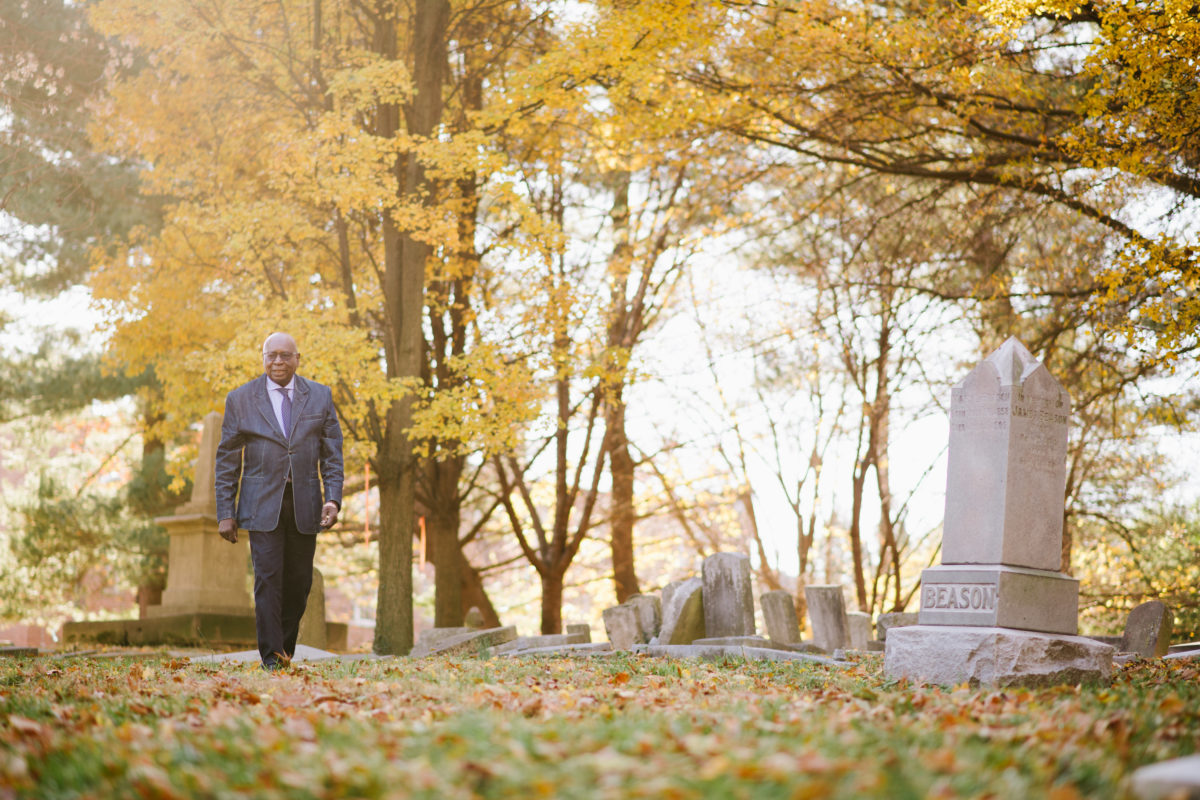
Mt Zion and Female Union Band Society Cemeteries, 27th & Q St NW
The Mt. Zion and Female Union Band Society Cemeteries trace their origins to the early 19th century, making them the oldest remaining African American burial grounds in Washington, D.C. Mt. Zion Cemetery, originally known as the Old Methodist Burying Ground and owned by the nearby Montgomery Methodist church (now Dumbarton UMC) congregation, was established around 1808. In 1842, the Female Union Band Society—a benevolent organization of free Black women—purchased adjacent land for its own cemetery. Over time, these two sacred sites became vital final resting places for both enslaved and free African Americans in Georgetown, bearing witness to a profound legacy of resilience, community-building, and mutual support.
Beyond serving as burial grounds, these cemeteries also functioned as a refuge for freedom seekers traveling north, making them a recognized stop on the Underground Railroad. Today, they sit side by side at the corner of 27th and Q Streets NW under the stewardship of the nonprofit Black Georgetown Foundation, which preserves and interprets their rich history. Visitors can stroll through these peaceful grounds to learn about Georgetown’s diverse cultural heritage while reflecting on the generations who forged a path toward freedom and shaped the neighborhood we know today.
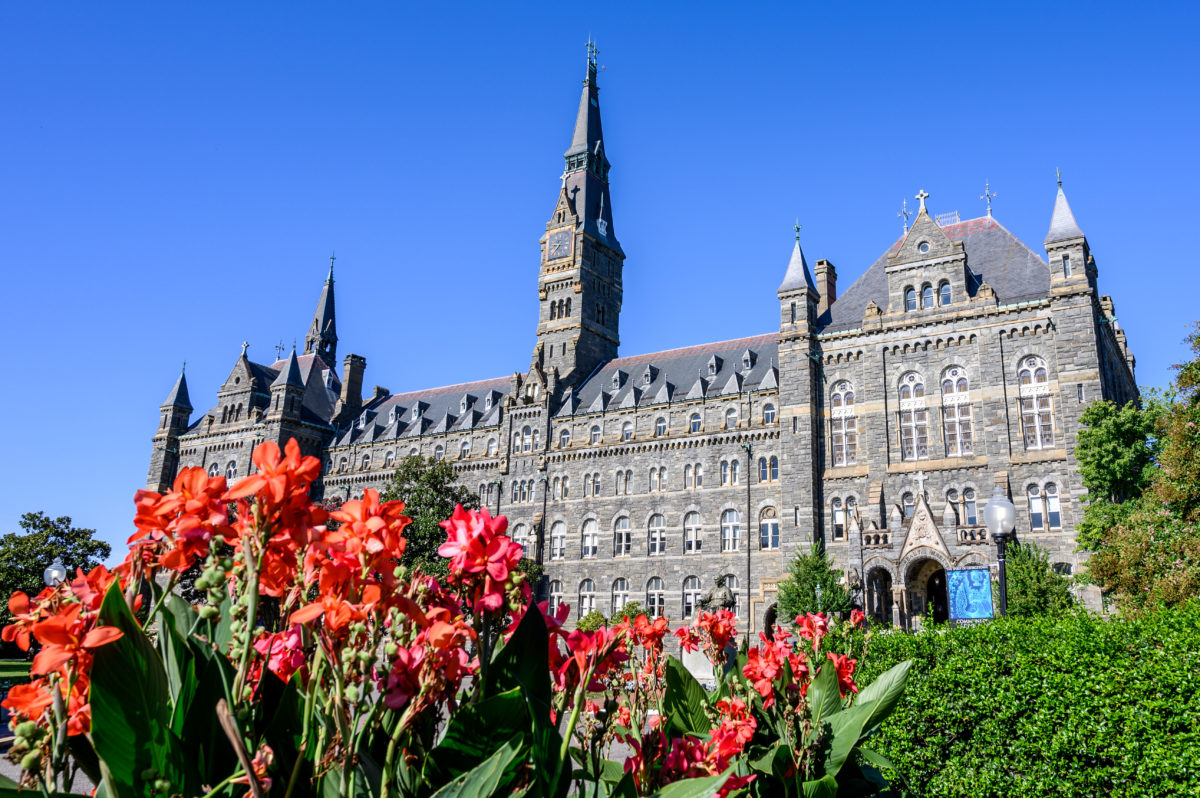
Patrick Francis Healy Hall, Georgetown University
Patrick Francis Healy (1834-1910) was born into slavery in Georgia. His mother Eliza was also enslaved and his father Michael Healy, a white Irish slave owner, legally owned his mother and their children. According to the Healy family biographer, Eliza and Michael lived “faithfully as a married couple” until her death in 1850. In Georgia it was illegal for blacks and whites to marry.
Laws that decreed that a child’s race was inherited from the mother and laws that made people “black” and “white” heavily affected the Healy family. To lessen their impact, Patrick’s parents sent him to school in New York where Patrick sought refuge in Catholicism and the adoption of a white identity. He graduated from Holy Cross College in Worcester, Massachusetts, and worked toward his goal of becoming a Jesuit priest. He traveled abroad and became fluent in Latin, French, Italian, and German.
Healy entered the Jesuit order in 1850. In 1866, as part of his Jesuit duties, he was sent to Georgetown College to teach philosophy. He became acting president in 1873. Within a year, he became president of Georgetown, the largest Catholic institution in the country and Washington, DC’s first college, founded in 1789. Healy transformed Georgetown into a modern university and retired in 1881. According to historian James O’Toole, it was not until the 1960s that Patrick Healy’s racial history was revealed. Since then he has been declared the first African American Jesuit and the first African American president of a predominantly white university.
Healy is buried in the Jesuit cemetery on the Georgetown University campus. Healy Hall, designed in the High Victorian style by Smithmeyer and Pelz, was listed on the DC Inventory of Historic Sites in 1964 and on the National Register of Historic Places in 1971.
*The Georgetown University website describes Healy as “the son of Michael Morris Healy, an Irish immigrant, and his wife, Mary Eliza, a former slave.” This description contradicts the research cited above.
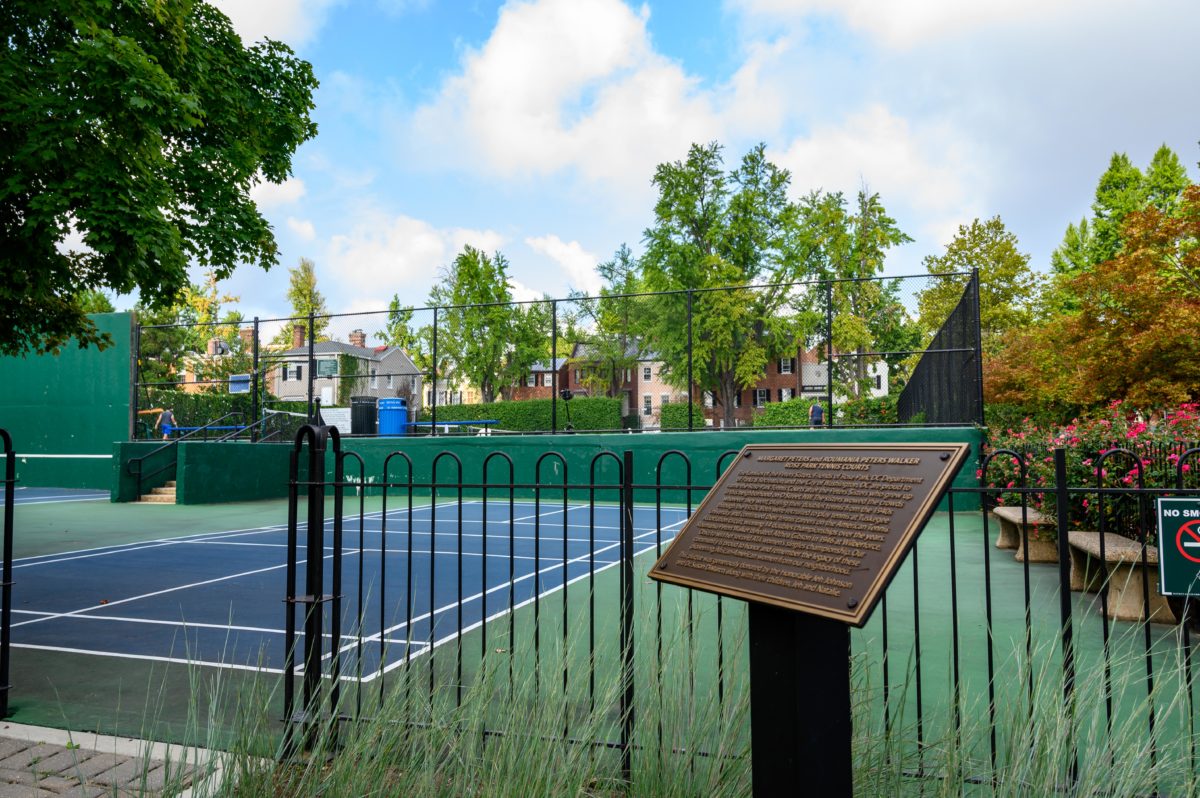
Rose Park Recreation Center, 2609 Dumbarton St
Rose Park Playground was originally established in 1918 by the Ancient Order of the Sons and Daughters of Moses to serve African American children. It was known variously as Patterson’s Park, Jacob’s Park, or Winship’s Lot. The city acquired it in 1922 and designated it a “colored” facility.
However, Rose Park was the main recreation center for Georgetown, and people ignored the segregation rules. Here children and adults (though not necessarily together) played basketball, volleyball, tennis, and dodgeball. They held folk dances, and learned crafts such as sewing and basketry as well as fine arts and music.
In the late 1930s the playground was remodeled by the DC Department of Recreation. When the Recreation Department placed a sign reading “For Coloreds Only” on the gate, the Rock Creek Civic Association protested and the sign was removed. In 1949 Rose Park became part of an official, successful experiment in non-segregation organized by the American Friends Service Committee.
When the Department of Recreation began formally to “gradually” end the official segregation of the city’s playgrounds, it acknowledged that Rose Park had always been one of the few integrated facilities.
Rose Park was the home court for Margaret and Roumania Peters, two tennis stars of the late 1930s who lived at 2710 O Street, NW. The sisters were recruited to play tennis at Tuskegee Institute where they consistently won the Southern Intercollegiate Athletic Conference. Roumania Peters Walker returned to teach tennis at Dunbar High School and Rose Park summer camps.
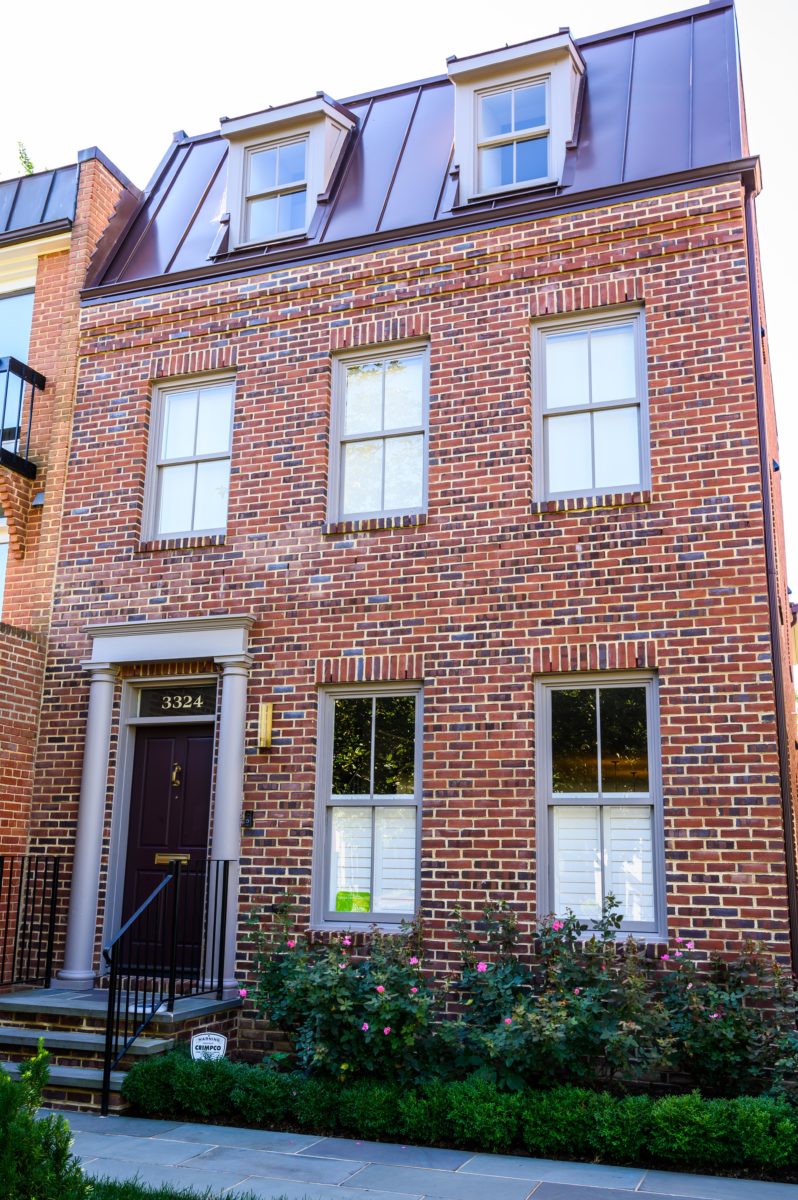
Yarrow Mamout Residence Site, 3324 Dent Place
Yarrow Mamout (ca. 1736-1823) was a member of Georgetown’s pre-Emancipation free black community and a lifelong Muslim. Yarrow (Mamout was his first name) was born and educated in Guinea, West Africa. At about age 14 he was captured by slave traders and shipped to the United States, where Samuel Beall of Maryland purchased him. Beall bequeathed Yarrow to his son, Brooke Beall, who had Yarrow make bricks for a house he was building in Georgetown. After Brooke Beall’s death his widow freed Yarrow in 1796. Yarrow saved the money he earned as a laborer and after four years was able to purchase a house and other property in Georgetown. He also invested in the Columbia Bank, one of Georgetown’s first banks.
Yarrow, who followed the Muslim faith at a time when few Americans did, was immortalized by two white artists near the end of his life. Charles Willson Peale painted Yarrow’s portrait in 1819 and recorded information about Yarrow in his diary. That portrait is held by the Historical Society of Pennsylvania. A second portrait, by Georgetown resident James Alexander Simpson (1822), is owned by the DC Public Library.
Recent research shows that Yarrow probably was of Fulani heritage (in which the name Yaro still is used) and was literate in Arabic.
Yarrow was buried in his yard; research is ongoing into whether his remains are still there and whether any part of the house at 3324 could have been Yarrow’s.

